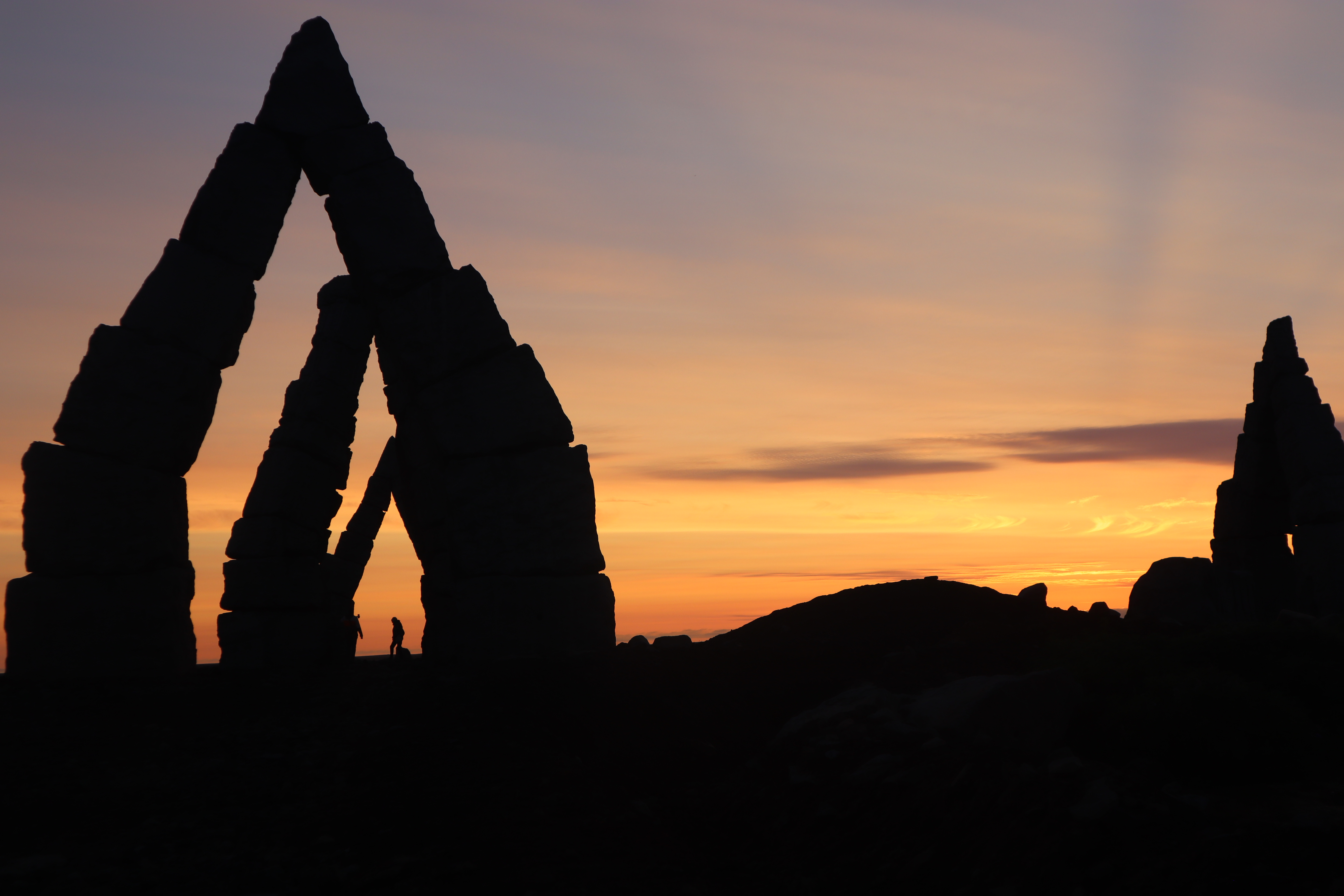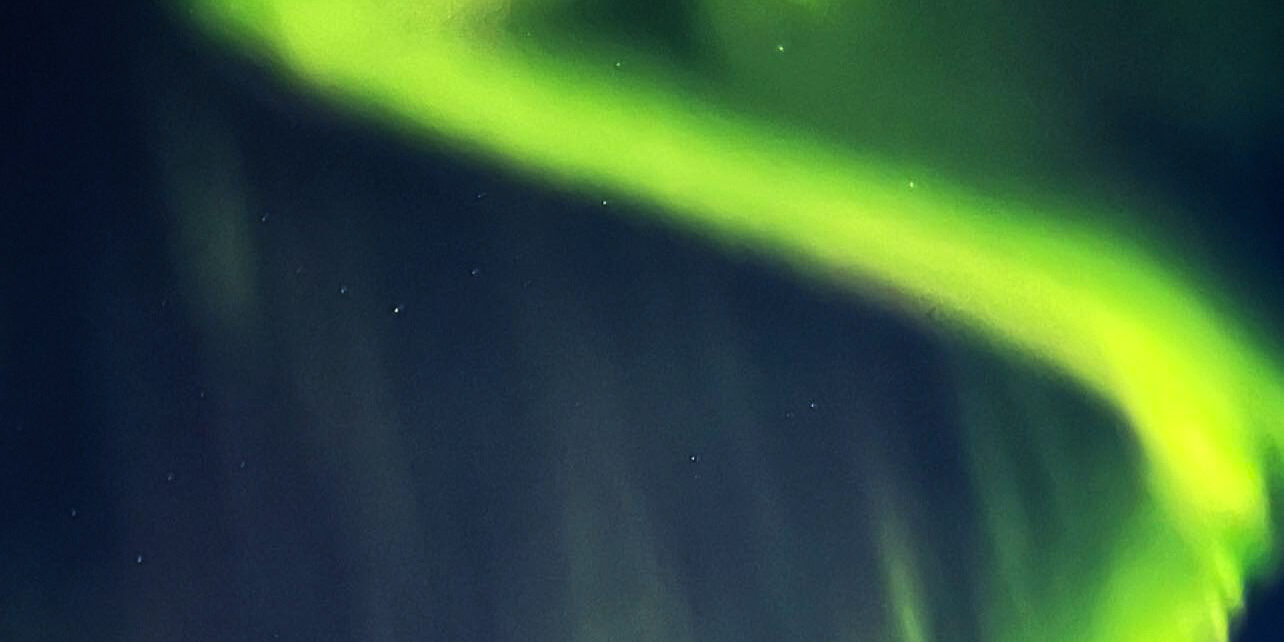Be whisked away in mystery and magic in one of Iceland’s most remote and holiest destinations…

In the most northern tip of the continent, in the quiet, isolated town of Raufarhöfn stands atop a hill, The Arctic Henge. The first time I saw a photograph of this place I knew I just had to see it.
The Arctic Henge is more than just the picture-perfect place to capture a geometric photograph or the Northern Lights, but a holy sundial dedicated to the old manuscript known as Völuspa or Prophecy of the Seeress. Völuspa is the first part of the Poetic Edda, a collection of anonymous narrative poems that narrate both the creation and destruction of the Old Norse mythological world and individual myths concerning the gods and goddesses within them.
In Völuspa an unnamed seer delivers the prophecy of the nine realms to the Norse god Odin. Here we get a clear description of the creation and destruction of the worlds. The seer names the first dwarves, beings who were believed to be the most talented smiths in the cosmos.
The first stanza of Völuspa reads:
Heed my words all classes of men
You greater and lesser children of Heimdall
You summoned me here, Odin,
To tell of what I recall
Of the oldest deeds of gods and men. – Völuspa Stanza 1 trans. By J. Crawford
MY INCREDIBLE EXPERIENCE

Call it luck or fate, but this is what happened. For several years I have searched for the Northern Lights in Iceland but never got lucky. One day, I had a feeling I would never see them anywhere, because I was meant to see them at the Arctic Henge. I saw photographs of this and it looked so unbelievable. Greens and blues staging the winter night sky as the perfect contrast for these beautiful stone formations. How lucky are these people to capture the aurora in such a location?
On my recent trip to Iceland, I decided one day after a visit to Asbyrgi canyon to drive to the henge. I was tired and hungry and not feeling up to it, but something told me to go. When I arrived I was disappointed to see so many people there taking photographs. After a long day, I desired alone time so I waited until sunset and made my way back up the hill with blankets.
I sat there for awhile in the center of the installation deep in thought and watching the sky. Eventually I began to see what appeared like the aurora first showing, a deep green moving behind the curtain of the night sky. I was in disbelief. Was this just my imagination fueled by hope and a silly premonition?
Shivering from exhaustion and cold, I made my way back to my van where I brewed some Icelandic moss tea and continued to watch. Then it happened. The sky danced green. I flung the door to my van open and ran as fast as I could up the hill crying, recording, and screaming. My coat was undone, my shoe laces were untied and my gloves dangled from my numb hands, but I did not care. I could not believe what I was seeing. There she was in all her radiance. The green lady dancing as bright as ever. I couldn’t tell if I was more awestruck or in disbelief that somehow, I had known this phenomenon would happen at this very place and time. Maybe it was just luck, or coincidence, but I think it was fate.
HISTORY

So when did these mysterious formations come about?
Unlike Stonehenge, The Arctic Henge is a newer installation and is still in progress. The first vision of this idea came about in 1998 and was finalized in 2004 by Haukur Halldorsson. Haukur’s vision aimed to use endless vistas free of obstructions on the horizon and the midnight sun. Raufarhöfn was the perfect location.
The Arctic Henge is fifty meters in diameter total with a six meter high gait that faces each direction, North, East, South, and West. Inside the gate is a high wall with a small opening at top. Inside the circle is a 10 meter height column on four pillars. The column will eventually be topped with cut prism glass that splits up the midnight sun into primary colors. Just like a traditional sundial, the play of light and shadow will coordinate with the time of day.
According to a local I spoke with that day; finances have stalled its development but when finished it is believed to be become a place of pilgrimage for those who follow the old gods from all over the world. As far as I felt, it was perfect just as. A place of peace and refuge for those seeking a connection with what we cannot see.
AS FAR AS THE DWARVES…
There is no real explanation to the named dwarfs in Völuspa besides Austri (East), Vestri (West), Norðri (North), and Suðri (South). According to my research, the remaining names have been connected to seasons and it is speculated they are associated with the yearly circle of 72 weeks. This becomes a kind of almanac where each dwarf controls a five-day period.
HOW TO GET THERE
From Husàvik
There are two ways to reach it from Husàvik. The first is a 149 km drive that takes you along the coast. There are some beautiful scenery this way. From Husàvik you will head North on Heðinsbraut toward Höfdavegur. Continue straight on Norðausturvengur Route 870. You will eventually reach Raufarhöfn. Drive through the town and you will begin to see the Arctic Henge to your left on a hill. You can park there for free and walk up to the monuments.
Due to high winds near the coast, I opted to cut inland to the Höfaskarðsleid then turned left onto Norðuasturvegur (85) to Rauforhöfn.
From Egilstadur (South)
This is a 264 km drive that will take about three hours or more depending on stops. Head NW om Þjodvegur towards Selas. Stay on Þjodvegur for 81km until you reach Norðausturvegur for 48 km. Turn left and Continue to follow Noðausturvegur (Route 85) for 67 km. Turn left to continue on Norðausturvegur for 47km. Turn Right to follow Norðausturvegur for the last 20 km into Rauforhöfn. Turn left onto Arctic Henge Road.
GPS Coordinates : 66.4620° N, 15.9628° W
RAUFARHÖFN
This most northern little town once dominated the herring industry in Iceland and in the forties and fifties was home to the largest export harbor. It is located on the Melákkásletta peninsula. It was a major fish processing station in the mid twentieth century.
PLANNING YOUR VISIT

This is a long day trip and requires quite a bit of driving to reach, but it is worth it. For those on a ring road adventure I would suggest planning a full day of it. There is a campsite in Raufarhöfn not too far from the henge itself that offers bathrooms and showers and can be reserved via the Parka app. I visited in the evening and when I arrived around sunset there were still people there taking photographs so if your desire is to have some solitude you may want to consider waiting until after sunset (where you may still find some Northern light seekers) or arrive early in the morning prior to nine o’ clock.
KNOW BEFORE YOU GO
As always check weather and road conditions via vedur.is before you embark on your drive. There are few stops for fuel and food on the way so be prepared. Bring blankets and warm clothing if you desire to spend some time outside there. During the day you can expect more visitors, in the evening maybe just a few Aurora hunters and photographers. If you arrive in morning and see an older gentlemen taking his daily walk up the hill, tell him I said hello. 🙂





